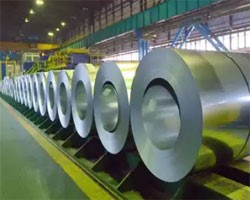SSC Current Affairs
| Polity and Governance |
|---|
|
|
|
Why in the news?
India is committed to decarbonise the steel sector in alignment with net-zero emission intensity target by 2070.To mark this, as a historic milestone in India’s journey towards low-emission steel, Shri H D Kumaraswamy, Union Minister of Steel & Heavy Industries, unveiled the Taxonomy of Green Steel for India during an event held at Vigyan Bhavan, on 12th December 2024 in the presence of Shri Bhupathi Raju Srinivasa Varma, Minister of State for Steel and Heavy Industries. What is Green Steel? Green steel is defined by carbon emissions below 2.2 tonnes per tonne of finished steel. India is the first country to officially define this term. The salient features of green steel taxonomy: “Green Steel” shall be defined in terms of percentage greenness of the steel, which is produced from the steel plant with CO2 equivalent emission intensity less than 2.2 tonnes of CO2e per tonne of finished steel (tfs). The greenness of the steel shall be expressed as a percentage, based on how much the steel plant’s emission intensity is lower compared to the 2.2 t-CO2e/tfs threshold. Based on the greenness, the Green steel shall be rated as follows: Five-star green-rated steel: Steel with emission intensity lower than 1.6 t-CO2e/tfs. Four-star green-rated steel: Steel with emission intensity between 1.6 and 2.0 t-CO2e/tfs. Three-star green-rated steel: Steel with emission intensity between 2.0 and 2.2 t-CO2e/tfs. Steel with emission intensity higher than 2.2 t-CO2e/tfs shall not be eligible for green rating. The threshold limit for defining the star rating of Green Steel shall be reviewed every three years. The scope of emissions shall include Scope 1, Scope 2, and limited Scope 3, up to finished steel production. Scope 3 emissions shall include agglomeration (including sintering, pellet making, coke making), beneficiation, and embodied emissions in purchased raw materials and intermediary products, but shall not include upstream mining, downstream emissions and transportation emissions, both within and outside the gates of a steel plant. The National Institute of Secondary Steel Technology (NISST) shall serve as the nodal agency for measurement, reporting, and verification (MRV) as well as for issuing the greenness certificates and star ratings for the steel. The certificate shall be issued on yearly basis (financial year). In case the steel plants opt for MRV more frequently, then the certificate may be issued more than once in a year as per the requirement. Government Initiatives: The green steel initiative aims to position India as a global leader in sustainable steel production. The Ministry of Steel is launching a ₹15,000 crore Green Steel Mission to facilitate this transition. This mission will include public procurement policies and financial support for companies adopting cleaner technologies. The government proposes that 37% of public procurement be allocated to five-star rated green steel. An additional 30% will be directed towards other green steel options. This strategy aims to incentivise the production and use of environmentally friendly steel. |
| >> More SSC Current Affairs |
